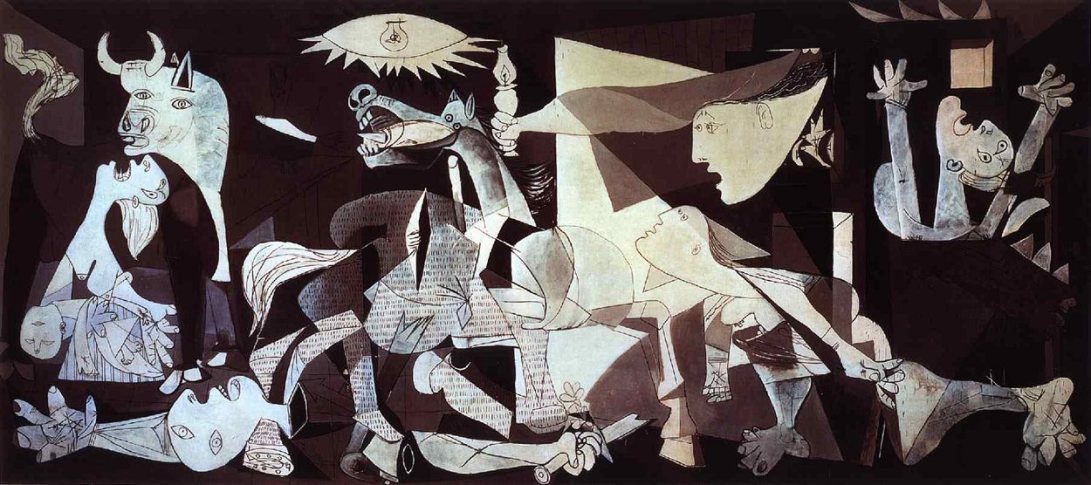Pablo Picasso is the first name that comes to mind when one mentions Cubism. Picasso pioneered this new art for in the twentieth century and has left an indelible impression on our modern conception of art. Over the course of his career, Picasso refined and reworked his own perception of cubism. His monumental work Guernica combines both Analytic and Synthetic Cubism juxtaposed in a form akin to Surrealism. This painting serves as an important marker in both the art world and the course of history and the world beyond art.
During the 1930s, Picasso spent his time primarily in France among great intellectuals, artists, and lovers. Picasso never returned to his native Spain after a visit in 1934, but he continued to identify as a Spaniard and remained sympathetic to Republican cause during Spanish Civil War which initiated in 1936. He became preoccupied with the war expressing these sentiments in a series of etchings. The largest contribution was of course Guernica, the mural painting commissioned by the Republican government for the 1937 World Fair in Paris. The imagery of the horse, fallen soldier, screaming mother with dead babies, were used to illicit horror and condemnation of the destruction of life and the attack at the hands of the Fascist regime. The bull simultaneously represents hope of overcoming the unseen aggressor that was the Fascist ideology. The dying horse represents the death of civilization and the utter despair this event caused Picasso. The horse though may be rescued by the woman with the lamp (Liberty) who seems to be rushing to its aid. Hope may also be conveyed in combining the shape of an eye with the sun’s rays and lightbulb. Despite the relatively abstract cubist form, Guernica is clearly displaying human mutilation and destruction. Picasso and his Cubist style in this case proved effective in eliciting a guttural response from the viewer.
